Reading time : 10 mins
‘Amma… amma …‘, called out the eight year old Athira to her mother.
‘I am in the courtyard. Can you please help me arrange the flowers Athira ‘, her mom answered.
Athira saw her mother already took shower and was arranging flowers on the floor in a circular design. She was excited and asked
‘Is it Onam?‘.
Her mother smiled and said ‘yes ‘.
Athira jumped in joy and cried ‘yaay its Onam‘. She continued with curiousity ‘But Amma.. but why do we celebrate Onam?’
Her mother smiled and answered ‘Onam is the state festival of Kerala and celebrated by Malayalis around the world. It’s also a harvest festival and falls on the 22nd nakshatra Thiruvonam in the Malayalam calendar month of Chingam, which in Gregorian calendar overlaps with August–September…..‘
Little Athira was listening to her mother attentively.
The history behind Onam – Mahabali legend 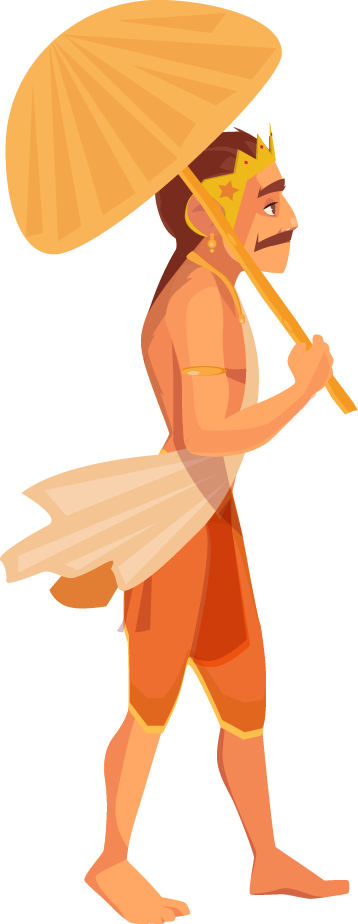
According to the Hindu mythology, Mahabali was the great-grandson of Prahlada who was an ardent Vishnu devotee. Mahabali came to power by defeating the gods (Devas) and taking control over the three worlds. Also, king Mahabali or Maveli was a generous and virtuous ruler of Kerala. During his rule, the kingdom became so prosperous that devas (gods of the Heaven) felt jealous and approached Vishnu for help. Since, Mahabali was a good ruler and Vishnu’s devotee as well, Vishnu refused to join the gods in violence against Mahabali. Mahabali treated everyone equal during his rule. As a result, the people were joyful and there was no anxiety nor sickness, no lies, no theft and deceit.
Thus, Lord Vishnu came in disguise as the fifth incarnation Vamana (a dwarf) when Mahabali was just about to commence a Yagna. As a result, Vamana requested Mahabali for three feet of land as an offering from the generous king. Certainly, Mahabali agreed. However, at the time of measuring the three feet of land, Vamana grew enormous in size and measured the whole earth and the entire sky in two steps. Since, he had nowhere else to place his third step, Mahabali asked Vamana to place it on his head. Vishnu accepted that as an evidence of Mahabali’s devotion.
Pleased by his benignity, Vamana blessed Mahabali and granted him permission to visit the people he ruled, once in a year. Subsequently, this occasion is celebrated by all Keralites as Onam. Thus, people clean their house and surroundings and decorate with Atha pookalam (flower rangoli) in the courtyard. They put swings where kids can enjoy and cook a grand feast and also serve it to birds and animals. And they welcome Mahabali!
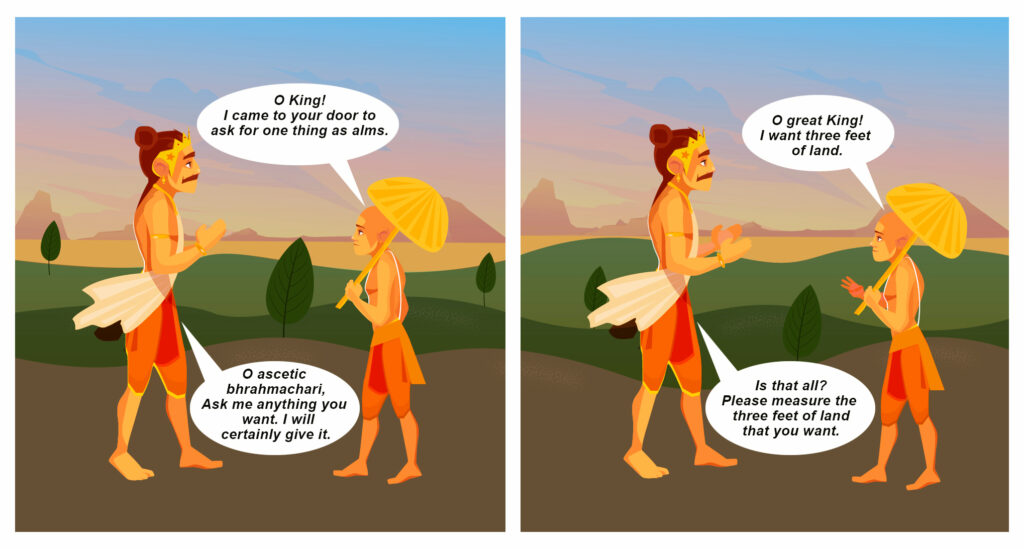
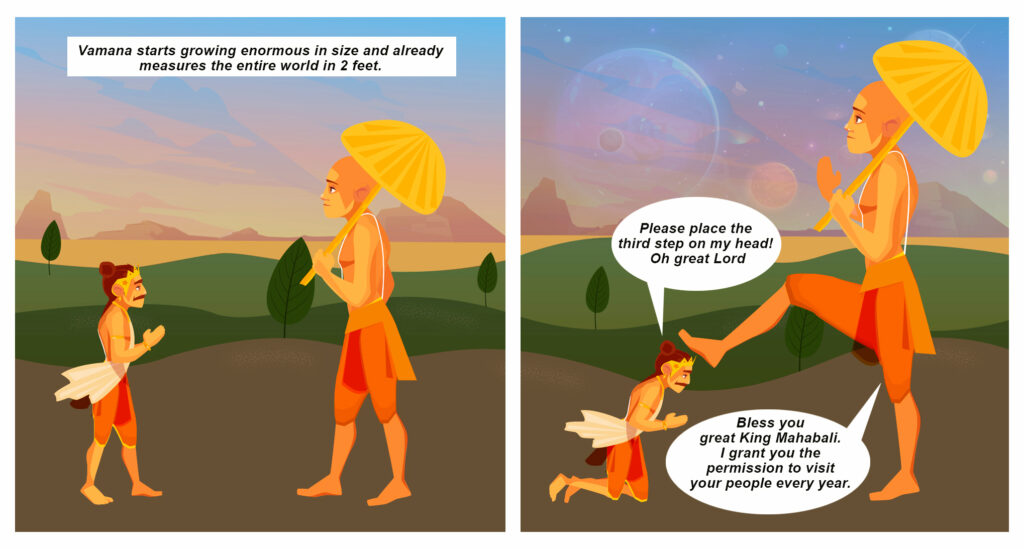
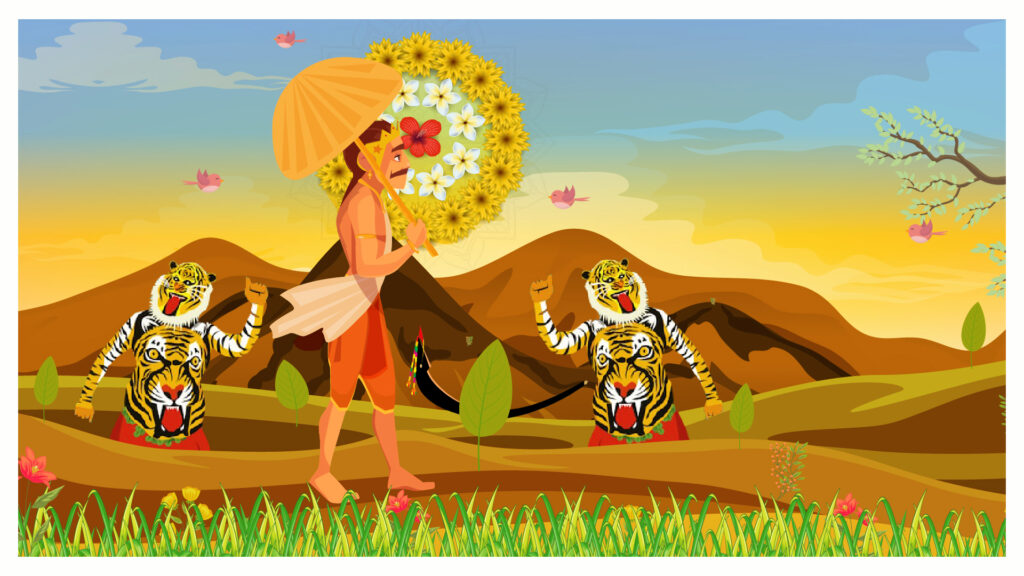
Mahabali on his way to see the people he once ruledCelebrations
Athachamayam 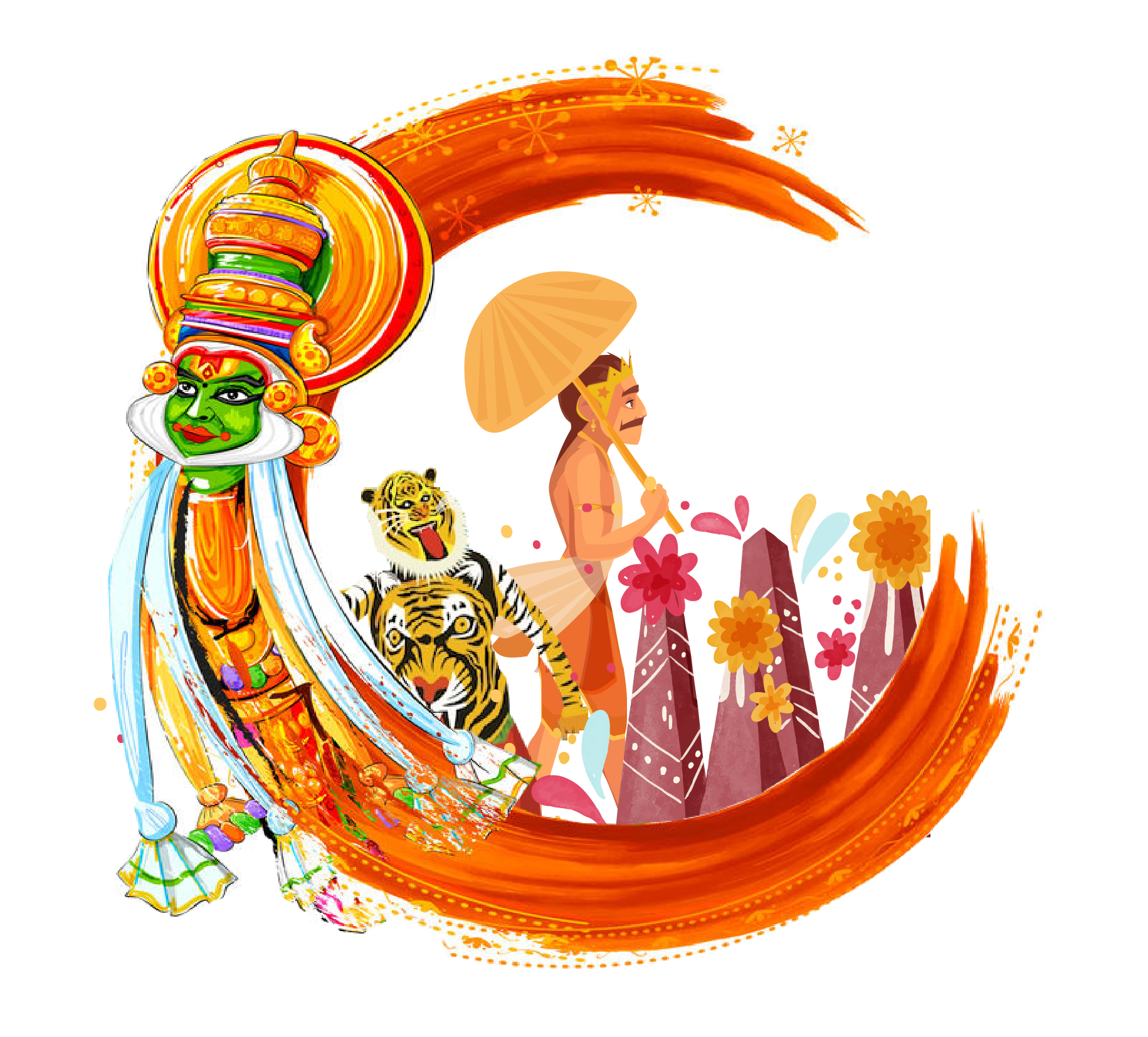
Onam starts off every year with a grand procession called Athachamayam at Thrippunithura near Kochi. The parade features elephants marching, drum beats and other music. Also, folk art forms, floats and colorfully dressed people with masks. Additionally, the parade also floats traditional feature scenes from epics such as the Mahabharata, the Ramayana etc. The procession path is from Tripunithura to the Vamanamoorthy Temple in Thrikkakara, Ernakulam district. The temple is dedicated to Vishnu in his Vamana (dwarf) avatar.
Pookkalam
The Pookalam consists of ten rings of flowers starting with one ring on the first day and a new ring is added each day. For instance, on the Atham day(first day), there will only be a single ring. The next day which is Chithira there will be two rings. And finally on the Thiruonam day there will be ten rings of ten different colours of flower. For example, the traditional flowers used for pookkalam are as below.
- Thumba Or Ceylon Slitwort,
- Mukkuthi
- Tulasi,
- Chethi,
- Mandaram,
- Chemparathy Or Hibiscus,
- Shankupushpam Or Butterfly Pea,
- Kongini Flower Or Lantana,
- Hanuman Kereedam Or Red Pagoda Flower,
- Jamanthi Or Marigold Or Chrysanthemum.
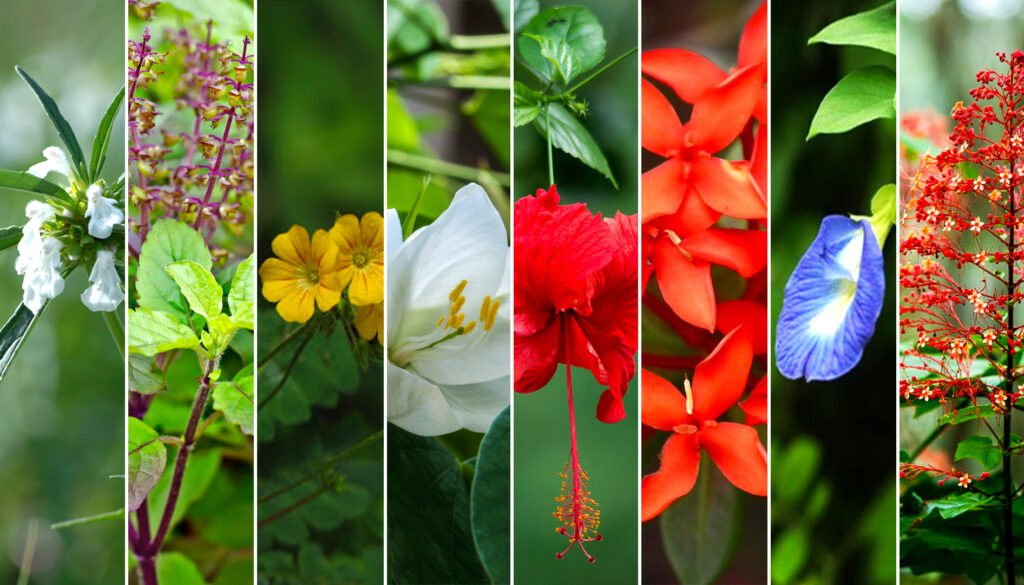
Symbolically the ten rings or steps represent the ten different deities in Hinduism. First step is Ganesha, secondly Shiva and Shakti, third is Shiva, fourth is Brahma, fifth is Pancha Boothangal, sixth is for Shanmughan or Muruga, seventh step is for Guru, eighth step is for ashta digpalakar, ninth is for Indra and tenth is for Lord Vishnu. Further, in the center of the Pookkalam we place a clay pyramid structure with four faces and a flat top during Onam celebration which symbolizes Thrikkakara Appan. This unique structure represents Vamana, an incarnation of Lord Vishnu. For some people the pyramid represents both King Maveli and Vishnu. We also refer to it as Onathappan.
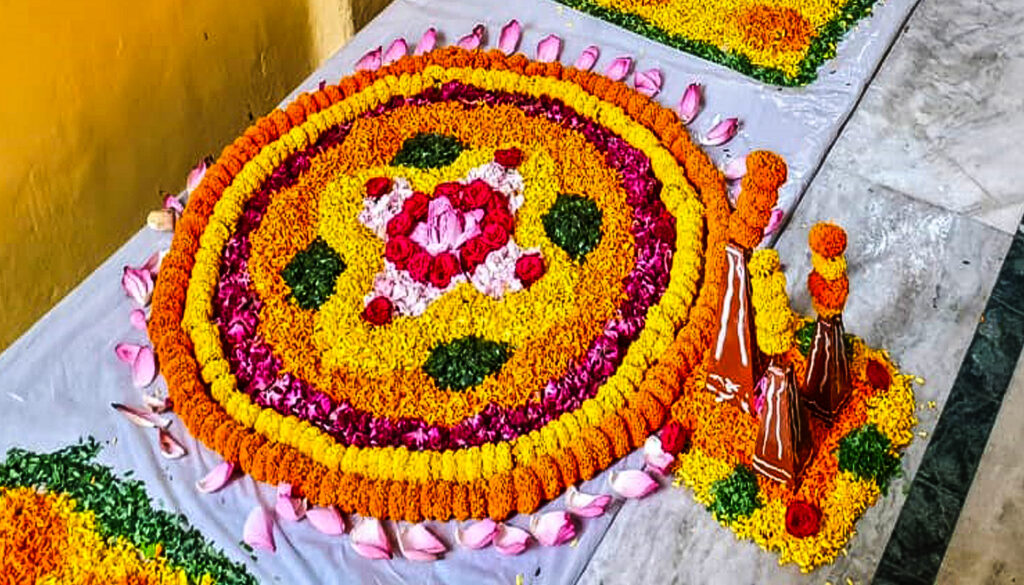
Today, more importance is given to design than the tradition.
Pulikkali 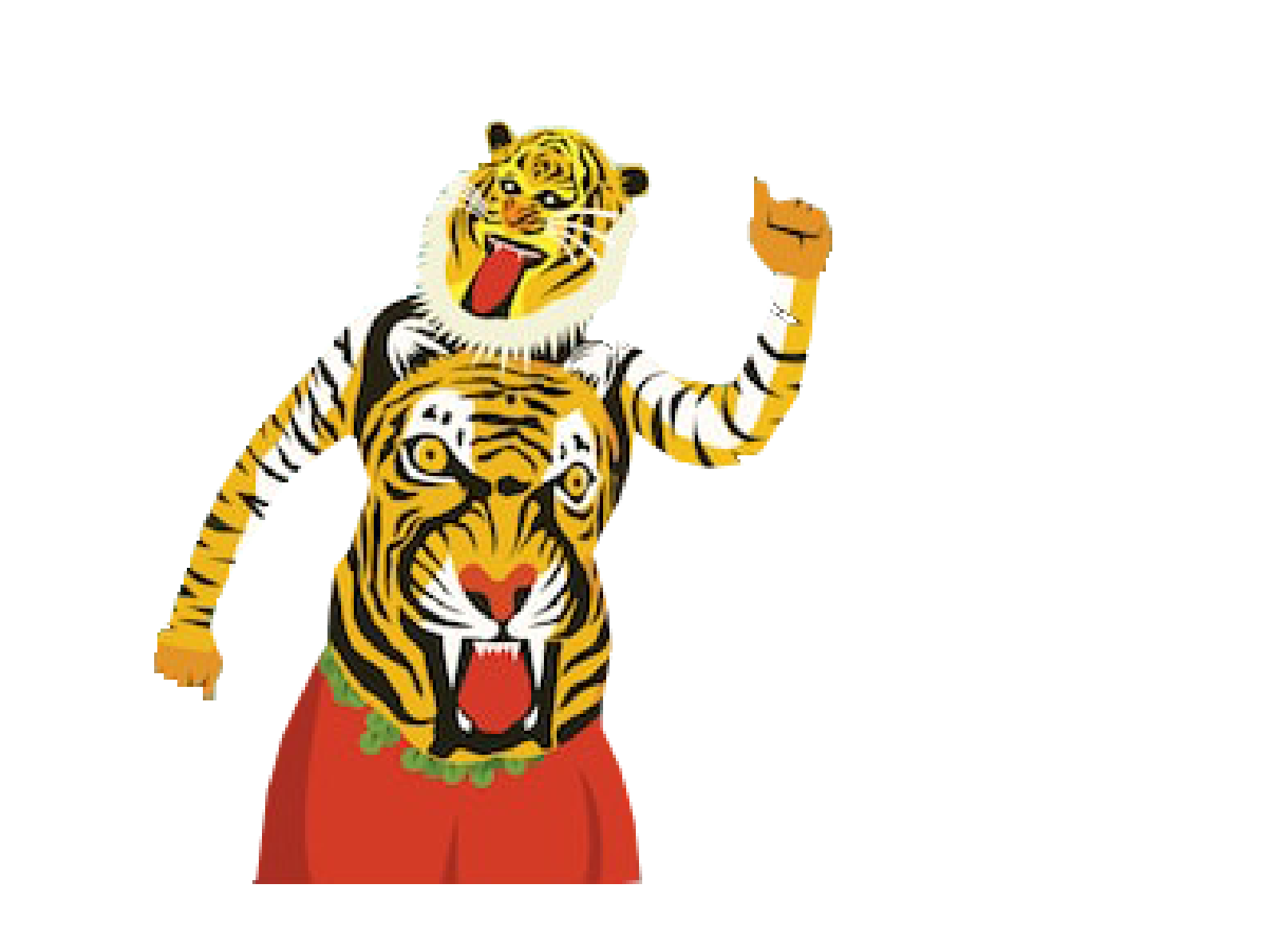
Trained artists perform a folk art called Pulikkali (“Puli” means leopard/tiger and “Kali” means Play in Malayalam language) to entertain people on the occasion of Onam. Thus, on the fourth day(Nalaam Onam) after Thiruvonam celebrations , performers paint themselves like tigers and hunters in bright yellow, red, and black. And dance to the beats of instruments like Udukku and Thakil. The performance revolve around the theme of tiger hunting. We can observe Pulikali in various districts of Kerala during this time. However, its performed in a grand way in Thrissur on the fourth day of Onam, where Pulikkali troupes from various districts come together to display their skills.
Vallam Kali 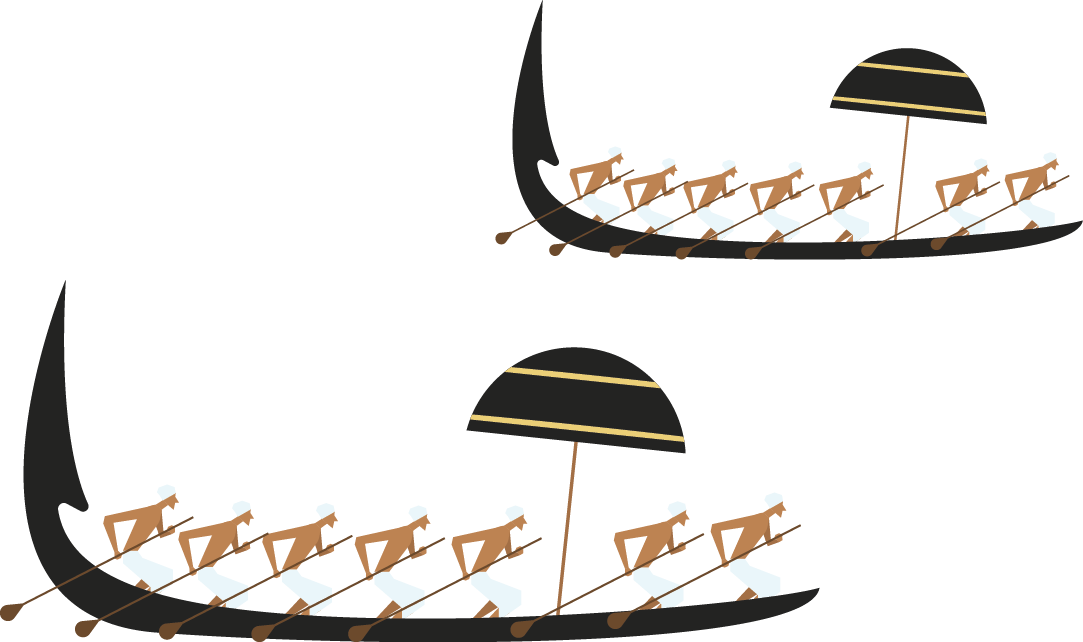
Vallam Kali is a traditional boat race conducted mainly during Onam and is a major event. The boats are paddled longboats and are referred to as ‘snake boats’. Therefore, Vallam Kali is also known as the snake boat race. As a result, the chundan vallam or palliyodam (‘snake boat’ is about 30-35 meter (100-120 feet) long with 64 or 128 paddlers aboard) is a big tourist attraction. On the fifth day after Thiruvonam, i.e. on Uthrittathi there will be a Snake boat race in front of the Aranmula temple.
Kaikottikali / Thiruvathirakali
Kaikottikali or thiruvathirakali, is the most famous women group-dances performed during Onam. Generally, eight to ten women dance in a symmetrical form on the Thiruvathira songs. During which they wear traditional attire while performing the dance. It’s a simple and elegant dance with great coordination. And they move in circular track clockwise and at times anticlockwise.
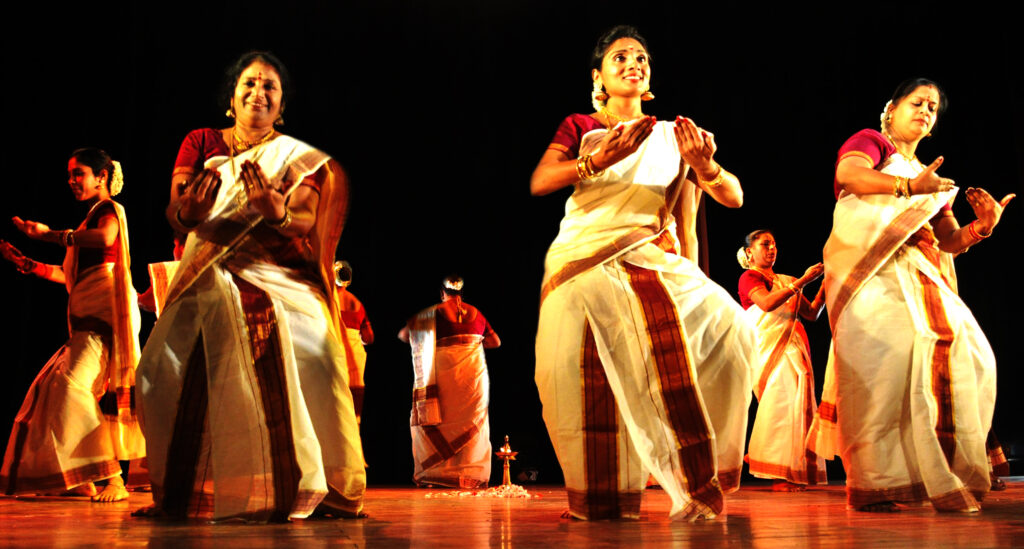
Music, dance and cultural programmes
Onam celebrations include
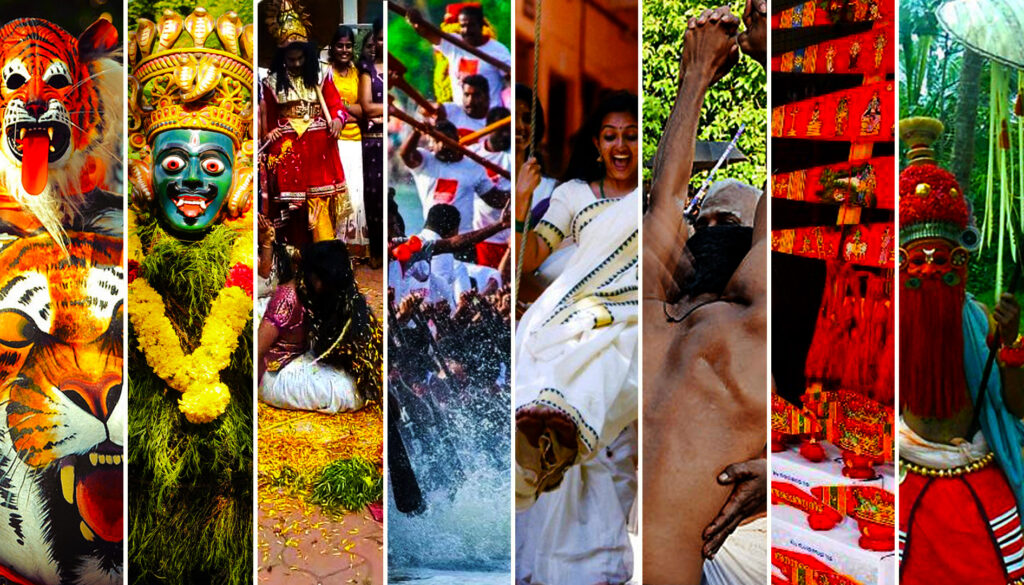
- Pulikali (tiger dances)
- Thiruvathira kali / Kaikottikali
- Vallam Kali (boat races)
- Pookkalam (flower Rangoli)
- Thumbi Thullal (women’s dance)
- Kummattikali (mask dance)
- Onathallu (martial arts)
- Onapottan (costumes)
- Tug of War
- Onavillu (music)
- Kazhchakkula (plantain offerings)
- Atthachamayam (folk songs and dance)
and other celebrations.
Onam Sadya
The Onam sadya(feast) is another indispensable part of Onam. It is the traditional nine or more course vegetarian meal served on banana leaf. To sum up, this sadya’s importance can be understood with a famous Malayalam proverb “Kaanam Vittum Onam Unnanam” which means “One must have the Onam lunch even by selling one’s property if need be.”
The Onam sadya is traditionally made with seasonal vegetables such as ash gourd, yam, cucumber, plantain and so on. In conclusion, the feast consists of lot of dishes like below.
- Chips – especially Banana chips
- Sharkaraveratti – Fried pieces of banana coated with jaggery
- Pappadam
- banana
- various vegetable dishes such as Injipuli (also called PuliInji made with ginger)
- Thoran
- Mezhukkupuratti
- Kaalan
- Olan
- Avial
- Sambhar
- Dal served along with a small quantity of ghee
- Erisheri
- Rasam
- Puliseri
- Kichadi and Pachadi (its sweet variant)
- Moru (buttermilk)
- Pickles.
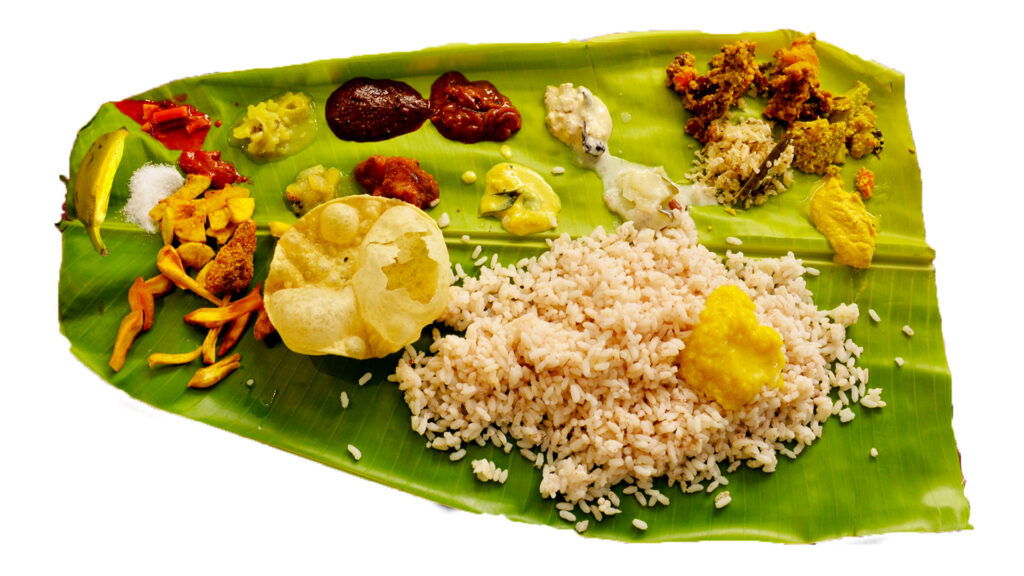
The curries are served with rice, usually the ‘Kerala Matta’ parboiled rice preferred in Kerala. Further, the feast ends with sweet dishes like Payasam, a sweet dish made of milk, sugar, jaggery, and other traditional Indian savories. Likewise, we decorate a similar banana leaf with all the food items prepared and place it in front of the lighted lamp for Mahabali.
Athira heard the whole story and asked ‘ Amma, do we also have payasam today after sadya?‘
Mother laughed and said ‘Of course, my little one! ‘ and hugged her tight.
Onam and Covid-19
This year due to Covid-19 pandemic, we can use locally-sourced flowers for making flower designs in our home. Huge shopping and roaming around the market should be constricted. Community Onam celebrations should be avoided. And we should strictly restrict to home and family members to help prevent the spread of the virus.
Wish all the readers a very Happy Onam! Let us know how you celebrated Onam this year.
Read more blogs –
Subscribe to us below

Happy Onam to you! Loved reading about the festival along with the beautiful illustrations & photographs! Much love ♥️
Thank you for your feedback! 🙂
Onashamsagal. Stay safe. Thanks for sharing so many things on Onam’s grandeur.
Thank you for your feedback :).
Quite a good descriptive and explanatory note supported with pictures and drawings. Congratulations! Onam 2020 is, of course, being celebrated in the background of the pandemic situation prevailing across the globe! Obviously, we all should be careful to be safe ourselves and ensure that those around you all and the society also will remain safe!
Stay safe! Help others to be safe! That’s the responsibility of every citizen!
Thank you so much for reading and sharing your valuable feedback ! 🙂
Happy Onam to you
Thank you ! 🙂
Informative..👌👌
Thank you! 🙂
Good job.. this is like a refresher for anyone…people don’t tend to remember all myths and legends. A click on this will enlighten or make them revisit the same
Regards
Deepak
Thanks Deepak for reading and sharing your valuable feedback! 🙂
Happy onam .Very nice presentation. Very informative and presented in an awesome way. Nice pics also .liked it a lot 😊😊😊😊keep writing
Thank you for your valuable feedback! 🙂
Pingback: Betty Botter bought better butter - Wordrefill.com September 10, 2020
Pingback: Cinque Terre - A solo trip to the amazing five fishing villages Wordrefill.com